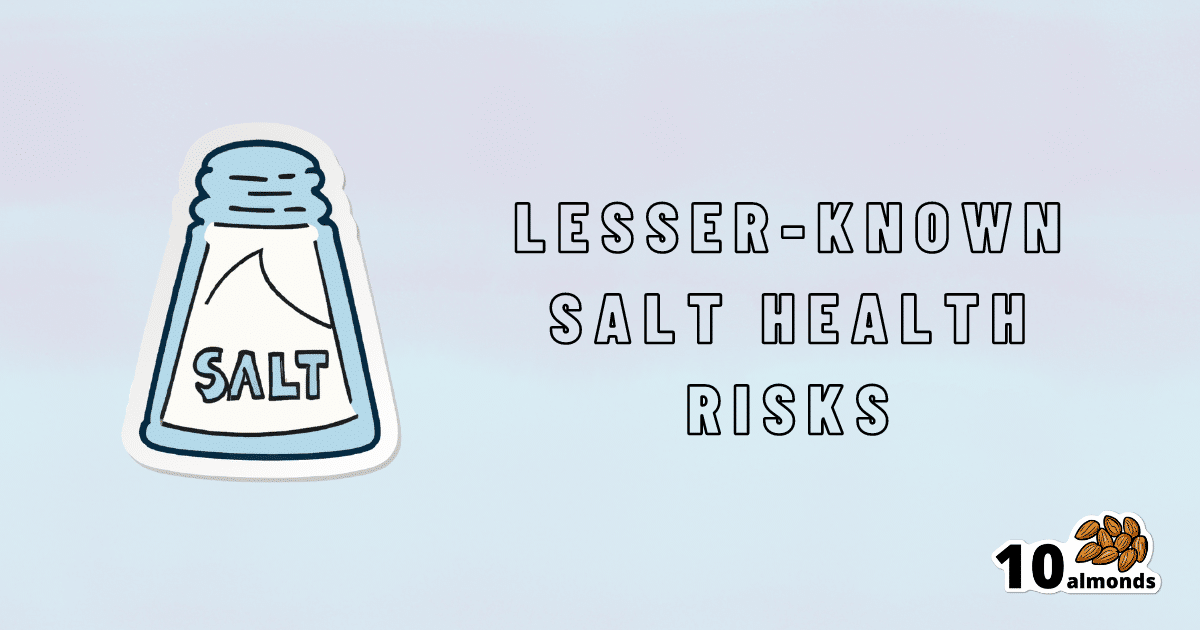How Too Much Salt May Lead To Organ Failure
Salt’s Health Risks: More Than Just Heart Disease! High salt levels can damage organs by peeling away blood vessel surfaces, starving them of nutrients. Reduce salt intake to protect your organs.

Salt’s Health Risks… More Than Just Heart Disease!
It’s been well-established for a long time that too much salt is bad for cardiovascular health. It can lead to high blood pressure, which in turn can lead to many problems, including heart attacks.
A team of researchers has found that in addition to this, it may be damaging your organs themselves.
This is because high salt levels peel away the surfaces of blood vessels. How does this harm your organs? Because it’s through those walls that nutrients are selectively passed to where they need to be—mostly your organs. So, too much salt can indirectly starve your organs of the nutrients they need to survive. And you absolutely do not want your organs to fail!
❝We’ve identified new biomarkers for diagnosing blood vessel damage, identifying patients at risk of heart attack and stroke, and developing new drug targets for therapy for a range of blood vessel diseases, including heart, kidney and lung diseases as well as dementia❞
~ Newman Sze, Canada Research Chair in Mechanisms of Health and Disease, and lead researcher on this study.
See the evidence for yourself: Endothelial Damage Arising From High Salt Hypertension Is Elucidated by Vascular Bed Systematic Profiling
Diets high in salt are a huge problem in Canada, North America as a whole, and around the world. According to a World Health Organization (WHO) report released March 9, Canadians consume 9.1 grams of salt per day.
Read: WHO global report on sodium intake reduction
You may be wondering: who is eating over 9g of salt per day?
And the answer is: mostly, people who don’t notice how much salt is already in processed foods… don’t see it, and don’t think about it.
Meanwhile, the WHO recommends the average person to consume no more than five grams, or one teaspoon, of salt per day.
Read more: Massive efforts needed to reduce salt intake and protect lives
The American Heart Association, tasked with improving public health with respect to the #1 killer of Americans (it’s also the #1 killer worldwide—but that’s not the AHA’s problem), goes further! It recommends no more than 2.3g per day, and ideally, no more than 1.5g per day.
Some handy rules-of-thumb
Here are sodium-related terms you may see on food packages:
- Salt/Sodium-Free = Less than 5mg of sodium per serving
- Very Low Sodium = 35mg or less per serving
- Low Sodium = 140mg or less per serving
- Reduced Sodium = At least 25% less sodium per serving than the usual sodium level
- Light in Sodium or Lightly Salted = At least 50% less sodium than the regular product
Confused by milligrams? Instead of remembering how many places to move the decimal point (and potentially getting an “out by an order of magnitude error—we’ve all been there!), think of the 1.5g total allowance as being 1500mg.
See also: How much sodium should I eat per day? ← from the American Heart Association
Share This Post
Learn To Grow
Sign up for weekly gardening tips, product reviews and discounts.




